-
TrackoBit
Manage commercial vehicles with the new-age Fleet Management Software
TrackoBit -
TrackoField
Streamline your scattered workforce with Field Force Management Software
TrackoField -
Features Resources
-
Blog
Carefully curated articles to update you on industrial trends. -
White Paper
Insightful papers and analysis on essential subject matters. -
Glossary
Explore an alphabetical list of relevant industry terms. -
What’s New
Get TrackoBit & TrackoField monthly updates here. -
Case Study
Explore the cases we solved with our diverse solutions. -
Comparisons
Compare platforms, features, and pricing to find your best fit.
-
About Us
Get to know TrackoBit: our team, ethos, values, and vision. -
Careers
Join the most dynamic cult of coders, creatives and changemakers. -
Tech Support
Learn about our technical support team and services in detail. -
Events
Check out the exhibitions where we left our marks and conquered. -
Contact Us
Connect with us and let us know how we can be of service.
How to Streamline Delivery Management in 2023?
- Author:Ayushi Nagalia
- Read Time:11 min
- Published:
- Last Update: September 30, 2024
Table of Contents
Toggle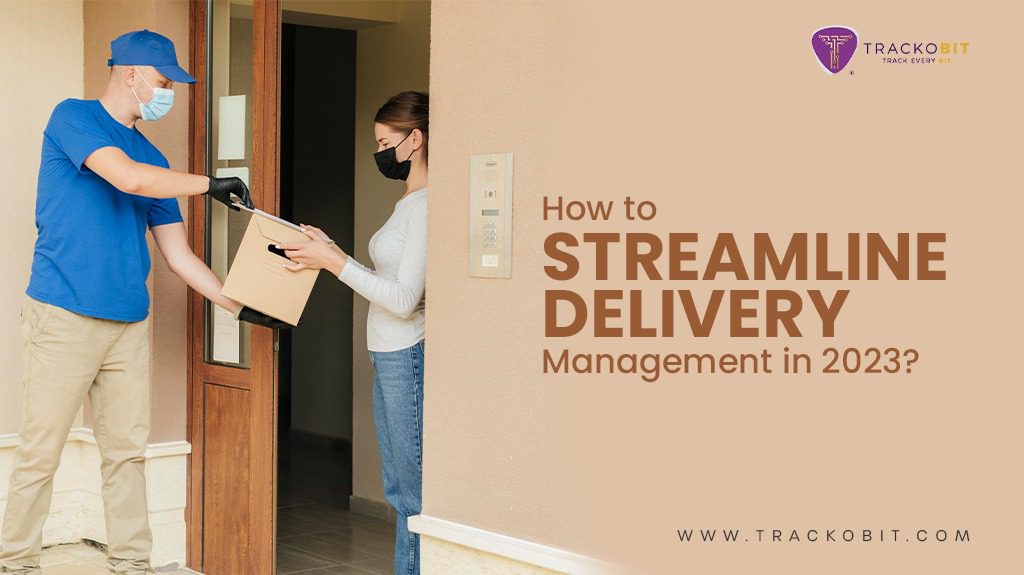
Streamlining Delivery Management through Last-mile Delivery Software is the only thing that is going to keep your product-based business afloat in 2023 and further!
Table of Contents
Toggle
The world has become incredibly fast-paced today, and businesses compete with each other to satisfy consumers’ rising demands. Therefore, only forward-looking businesses that can fulfill demands through effective deliveries with robust delivery management systems can survive.
Regardless of the business size – a small e-commerce store or a major retail organization – the quality of product delivery makes or breaks a business in 2023.
The world of delivery management has massively advanced. Businesses are now able to leverage cutting-edge technologies to optimize their operations. Functions like real-time tracking and automated dispatching are only the tip of the iceberg!
In this blog, we’ll look at the present and future state of delivery management. We will also offer practical tips to streamline operations, cut expenses, and increase customer happiness!
Understanding Last-Mile Delivery Management
Before going any further into this topic, it is crucial for you to understand what last-mile delivery systems are, to begin with.
What is Last-mile Delivery?
Through common-understanding, last-mile delivery can be defined as the last leg of the supply chain/delivery process. It is the process of delivering the consignment from the last warehouse directly to the end customer.
Optimizing last-mile delivery has become more crucial than ever in today’s world. In fact, about 49% of online businesses will have to offer same-day delivery in the next 1-2 years to stand ahead of the competition. This is mostly because:
- Consumers’ delivery demands have increased exponentially
- Since consumers are directly involved, the experience can make or break businesses
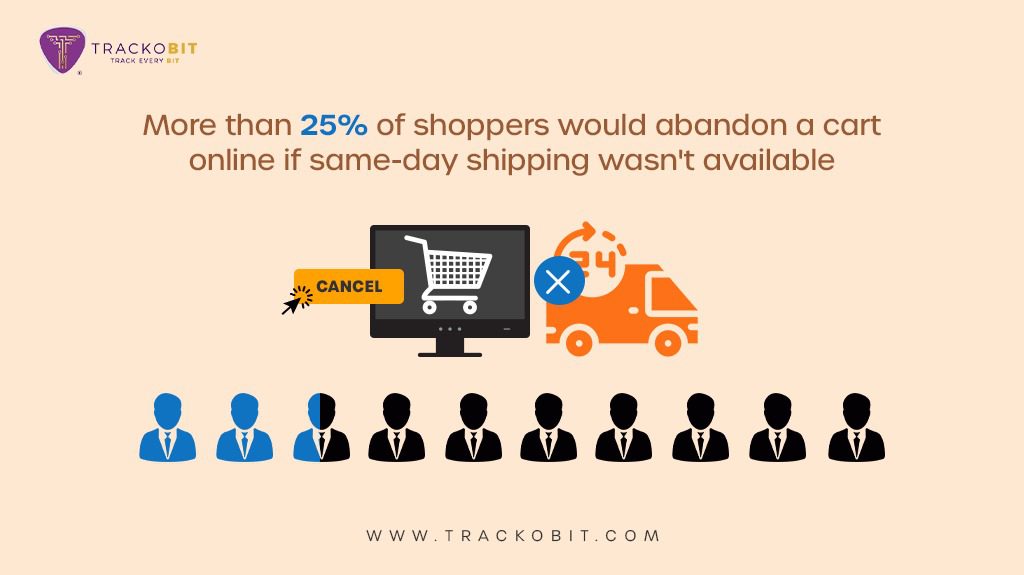
The Role of Technology in Last-mile Deliveries
Managing complex networks of drop addresses and delivery personnel is one of the biggest challenges faced by modern delivery businesses. Route planning and optimisation, adding ad-hoc deliveries, managing hyperlocal deliveries, and meeting ETAs, all while cutting costs can be daunting. And this is exactly where technology steps in!
With simple technological aids such as GPS trackers to advanced tools such as AI, businesses can now leverage data to make their last-mile efforts effective. Not only do businesses get to increase delivery efficiency, but they can also cut transportation costs and nullify human errors by embracing technology.
The Challenges of Delivery Management in 2023
Delivery management systems have been constantly changing and progressing in the last few years. However, even in 2023, businesses have to negotiate some of the following hurdles to maintain decent profits and operations:
Managing Complex Data
Last-mile delivery is not a single-stop pick-up and drop process. Instead, it has to manage and communicate between multiple networks such as drivers, vehicles, drop addresses and much more.
Managing so much data is not a single-person job. Neither is it safe from human errors. The problem is that any error can lead to major inconveniences to customers and massive operational confusion.
High Delivery Costs
The advent of e-commerce and hyperlocal deliveries have increased the number of daily deliveries. Customers now don’t only want their orders quickly but also in a cost-effective manner (preferably free delivery).
Businesses are often under competitive pressure to deliver on time in the most cost-effective manner. Being unable to do so will:
- Cost customer loyalty, if a business asks the consumer to pay or hike delivery costs.
- Massively increase operational costs, sometimes even surpassing the gains.
Since everything is easily available everywhere, the businesses handling freight costs the best way possible win the race!
Increased Competition
Globally, the number of delivery partners has surpassed normal. Therefore, the chances of standing out have greatly diminished for most delivery-based businesses. The competition forces businesses to offer operationally expensive things such as same-day delivery, hyperlocal deliveries, and even free deliveries.
Due to the excessive competition, businesses lose:
- Sales to other businesses who are doing exactly what they are – in the same exact manner.
- Profits to expensive sales and marketing strategies that businesses have to necessarily indulge in.
Customer Expectations
As discussed before, customer expectations have increased by a large portion. In fact, 26% of consumers will prefer not shopping over having to wait over long shipping times.
While meeting these expectations itself is a difficult and expensive problem. The major issues arise when the inability to meet these expectations leads to bad reviews, fallen goodwill, and much more.
Logistical Difficulties
Unexpected issues such as bad weather, blocked roads, or road accidents are a huge part of the challenges faced by last-mile delivery businesses. Logistical issues such as road congestion and vehicle breakdowns are not something that can be handled by managers while sitting in the office.
However, these logistical road difficulties cost businesses through customer dissatisfaction, haphazard operations, and even roster mismanagement!
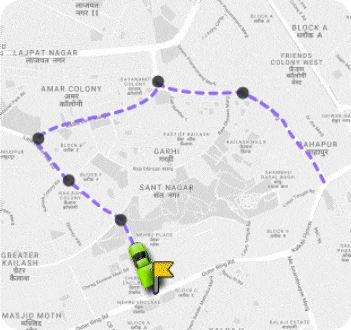
Last Mile Delivery Software
Have everything done within seconds: order sorting, route optimisation, and dispatch planning.
Don’t believe us?
Features of an Effective Last-Mile Delivery Management Software
As we have already established, the last-mile delivery comes with its own set of major concerns and challenges. Therefore, it is crucial for delivery managers to be able to make their jobs more effective and functions more profitable through last-mile delivery management software.
From real-time visibility to capacity management, here are some crucial features that help streamline last-mile deliveries.
Real-time Tracking and Visibility
Maintaining transparency and providing customers with real-time information about their packages makes a huge impact. Not only does it instill more confidence in customers, but also reduces the number of query calls. Moreover, real-time delivery person tracking allows managers to maintain rosters, further operations, and ad-hoc tasks with ease.
Route Optimization and Planning
As mentioned earlier, maintaining routes of such complex networks is a huge headache for last-mile delivery operations managers. Therefore, route planning and optimisation tools are must-haves in a last-mile delivery software.
These tools can identify and manage routes according to priority, delivery time windows, area, traffic, efficiency, and much more. Integrating this function into a business’ last-mile delivery system can give at least a 76% boost in efficiency due to reduced admin time and human errors.
Automated Dispatch and Scheduling
Automated dispatch and scheduling can assist businesses in managing their delivery operations more efficiently. However, putting this technology into action necessitates a large investment in software and hardware, as well as a detailed understanding of the organization’s delivery process.
Organizations must also ensure that their automated dispatch and scheduling systems are dependable and accurate, as errors or delays can negatively affect the client experience and, as a result, the organization’s reputation and income.
Rider Roster Management
Rider roster management is another issue that last-mile delivery managers constantly face. Therefore, to make things simpler, their last-mile delivery software should manage their delivery resources, ensuring that riders are assigned to deliveries as easily as feasible.
Rider roster management should allow branch managers to view each of their drivers and the trips they are on or assigned to. It should also be able to give a detailed view of which trip each driver is on, or how many drivers or vehicles are available at a particular time.
This feature builds a thorough knowledge of the organization’s delivery process. It imparts the capacity to manage rider availability, workload, and performance.
Capacity Management
Capacity management is an interesting feature that every last-mile delivery software must have.
Since last-mile delivery is not a one-stop pick-up and drop process, each vehicle and driver needs to carry as many packages as possible on each trip. But managing that along with managing trips and routes sounds too confusing, right? Well, that is where capacity management comes in.
Through this feature, the software can detect how many packages a driver can carry on the field on a particular route at a specific time. This is mostly done in accordance with the vehicle that the driver is functioning on.
Analytics and Reporting
Data analysis and report formation are necessary for tracking and optimizing delivery operations for any last-mile-centric firm.
To discover opportunities for improvement and make data-driven decisions, organizations must have access to accurate and up-to-date data on delivery performance, customer satisfaction, and other vital indicators.
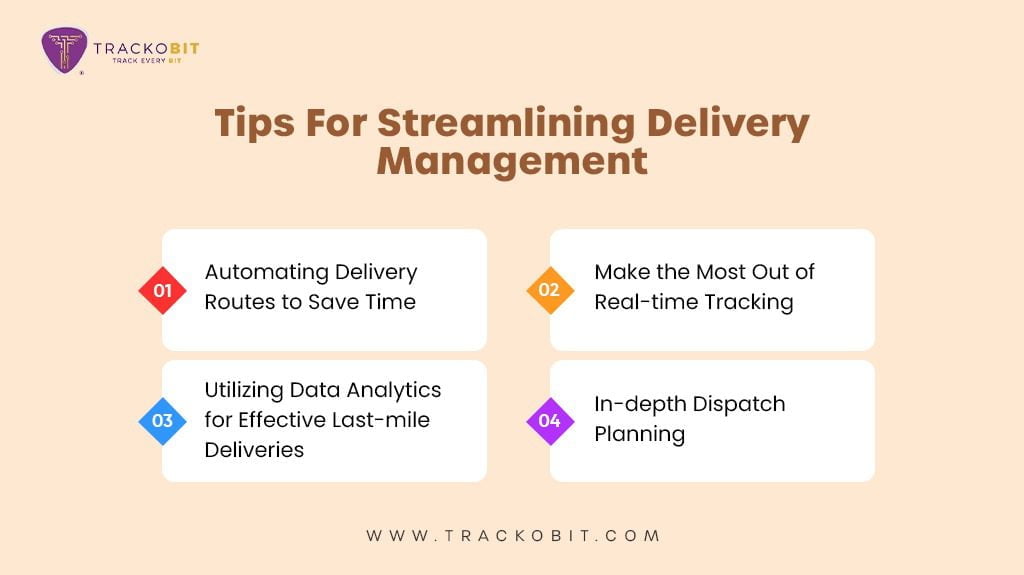
Tips For Streamlining Delivery Management
By now you have learnt what last-mile delivery management is and what features from a last-mile delivery software will make the fusion simpler. Now, in this section, we will look at various ways in which you can use this software to streamline delivery management in 2023.
Automating Delivery Routes to Save Time
Delivery route optimization is crucial for lowering costs and increasing efficiency. It entails determining the most efficient routes depending on delivery time frames, traffic, driver capacity, distance, and hundred other rules.
While some delivery managers choose to stick to manual delivery route planning, the smart manager will automate the process.
With the right route automation tools, last-mile delivery managers can leverage technology, ML, and AI to calculate the most effective and efficient delivery routes based on all defined factors.
All they have to do is enter the pick-up and drop addresses into the software. The rest is magic. The software will itself draw the best possible delivery route combinations that can cover as many waypoints as possible in the least amount of time and consumption.
Through this automation, last-mile delivery managers can save a lot of time, fuel, reduce vehicle wearing, and improve business profitability. Ultimately, automatic route planning helps managers streamline their deliveries and stay competitive in this challenging market.
Make the Most Out of Real-time Tracking
Smart managers monitor delivery processes in real time, gaining precise and up-to-date information on the location of each delivery, the status of each package, and the ETA.
This data helps ensure that deliveries are done on time and in accordance with customer expectations. Amalgamated with electronic PODs, live tracking also narrows down the causes of differences between ETAs and ATAs.
Real-time data also helps businesses get the most important insights into their operations. For example, a manager can use real-time tracking data to identify bottlenecks in delivery, evaluate delivery performance, and optimize delivery routes. This data can then help improve delivery operations, cut costs, and improve overall customer satisfaction.
In addition, tracking data is also used to develop reports that provide insights into the company’s delivery success, customer satisfaction, and other vital parameters. Organizations can enhance performance and streamline management by using the insights gained through real-time tracking data.
Real-time tracking and visibility is also important to enhance consignment security. After all, if there is some anomaly, managers can check historical reports or live footage to see what happened, right?
Utilizing Data Analytics for Effective Last-mile Deliveries
Data analytics can assist businesses to identify delivery bottlenecks, monitor performance, and optimize delivery routes. Organizations can use data analytics to make data-driven decisions that increase accuracy and streamline delivery management.
Delivery times, delivery routes, delivery costs, and customer feedback are some examples of data that can be collected and analyzed for delivery management. By careful evaluation, managers can discover trends, patterns, and possibilities for improvement.
Improved accuracy is one of the most significant advantages of data analytics. After all, all ETAs, expectations, and promises will be made after careful evaluation of all data collected by the software. All this also helps enhance decision making, customer experience, and fuel economy.
In-depth Dispatch Planning
Delivery management relies heavily on effective dispatch planning along with route management. Dispatch management is basically organizing and directing the delivery process, assigning trips to riders, and assuring minimum ETA and ATA discrepancies.
Rider roster management is an efficient technique to streamline dispatch planning. Organizations may rapidly assign delivery jobs depending on rider availability and workload by creating a roster of available riders
Transparency of data is another critical component in dispatch planning. Businesses can monitor the operations in real time through a software that gives precise and up-to-date information on the location of each delivery and the ETAs.
This data is essential for ensuring that deliveries are made on time and that everything is well monitored in the field. Organizations may make educated decisions that increase delivery performance and expedite dispatch planning by embracing data transparency.
Benefits of Using Last-mile Delivery Software to Streamline Delivery Management
The business world has become extremely fast-paced. And the only possibility to be anywhere close to the top is by adopting the equally fast-paced technological world.
Managing last-mile delivery without software aid might as well be any delivery manager’s nightmare – owing to the complex data to be handled. That is why it becomes incredibly important to use last-mile delivery software to streamline delivery management. Let us look at its benefits here:
Improved Customer Satisfaction
The higher the delivery management, the better customer experience the company will be able to offer. All the customer expectations can be met with complete accuracy, allowing to satisfy customers. The best thing to come out of this is that the business can gain some loyal and recurring customers.
Increased Operational Efficiency
Boosted efficiency is the biggest reason why most delivery managers choose to use Last-mile Software for delivery management streamlining.
When the delivery system is on-point, businesses can massively reduce operational costs (through efficient routes), time and effort required for precise operations (adopting automation). Once all these hurdles are out of the way, businesses can focus on improving administrative functions for creating better strategies that will lead to higher profitability.
Reduced Costs
Organizations can decrease delivery costs such as fuel, delivery persons’ salaries, and vehicle maintenance by optimizing delivery management. All this can be done through features such as optimized routes and capacity management that allow companies to use their resources to their fullest.
Cost reduction can be done by regulating the number of vehicles required for the business, managing routes in a fuel-efficient manner, and optimizing time and effort through dispatch management and roster management.
Improved Tracking and Analytics
Streamlining delivery management provides businesses with real-time delivery tracking and monitoring. This allows them to swiftly identify and recognise any issues in their delivery management system.
Through the right last mile delivery software, managers can also use this data to develop reports that provide insights into delivery performance, customer behavior, and other important business areas.
Enhanced Customer Communication
Streamlining delivery management also increases customer satisfaction. Businesses can improve customer communication and develop closer relationships with their consumers by giving precise delivery updates and tracking information.
Finally, optimizing delivery management can increase customer happiness, and enhance productivity while lowering operations costs and giving the ability to make data-driven decisions. With complete delivery management streamlining, businesses can improve their overall performance and expedite delivery management by implementing and employing digital solutions.
For instance, using jewelry store stock management software improves customer experience by providing accurate inventory and timely order fulfillment. Real-time updates and tracking details reduce uncertainty, build trust, and foster loyalty and positive referrals.
Last Mile Delivery Software
Have everything done within seconds: order sorting, route optimisation, and dispatch planning.
Don’t believe us?
How Streamlining Delivery Management Has Helped Real Businesses
Several businesses have successfully used last mile delivery software to streamline their delivery management operations. In this section, we will discuss three case studies that demonstrate the advantages of delivery management software.
Company A Improved Delivery Management With Last-Mile Delivery Software
Company A, a national courier firm, was trying to adequately manage their last-mile delivery operations. They faltered in managing and tracking their riders, which resulted in late deliveries, higher operational costs, and loss of company goodwill.
Company A implemented last-mile delivery software to address these issues. The software enabled real-time tracking and visibility of their fleet. Additionally, it automated dispatch and trip management, allowing them to improve their delivery routes and reduce the number of vehicles required for deliveries.
Company A was able to dramatically enhance their delivery performance as a result of these improvements, lowering delivery times by 30% and raising on-time delivery rates by 40%. They also saved a lot of money by cutting up on fuel and labour.
Company B Improved Productivity Using Route Optimization Systems
Company B, a food delivery service, was facing difficulty managing their delivery routes. They struggled to optimize their routes and manage multiple drop-points that could have been covered in a single trip. This resulted in longer delivery times and higher operational costs.
To address these issues, Company B implemented last-mile delivery software with powerful route optimisation tools. Doing so allowed them to improve routes constituting factors such as traffic conditions, delivery quantities, vehicle capacity, and other crucial parameters.
Company B was able to boost their delivery efficiency as a result of these improvements, cutting delivery times by 25% and increasing the number of deliveries per hour by 30%. They also saved money by lowering the number of cars needed for deliveries and optimizing fuel consumption.
Summing Up
Last-mile delivery management has always been a complex task. However, with the increasing competition in the current market, thanks to ecommerce and same-day delivery platforms, the last leg of supply chains has become even more cumbersome to manage.
While managers have, and some managers still do manage their delivery systems manually, using last mile delivery software like TrackoMile seems to be the only logical way to completely streamline them.
The better the software you use, the higher your profitability and consumer relations will be – so make all your choices wisely!
Ayushi Nagalia is a Senior Content Specialist at TrackoBit. She is a marketing maverick with a lush background in literature. With years of experience crafting content for various niches, she speciali... Read More
Related Blogs
-
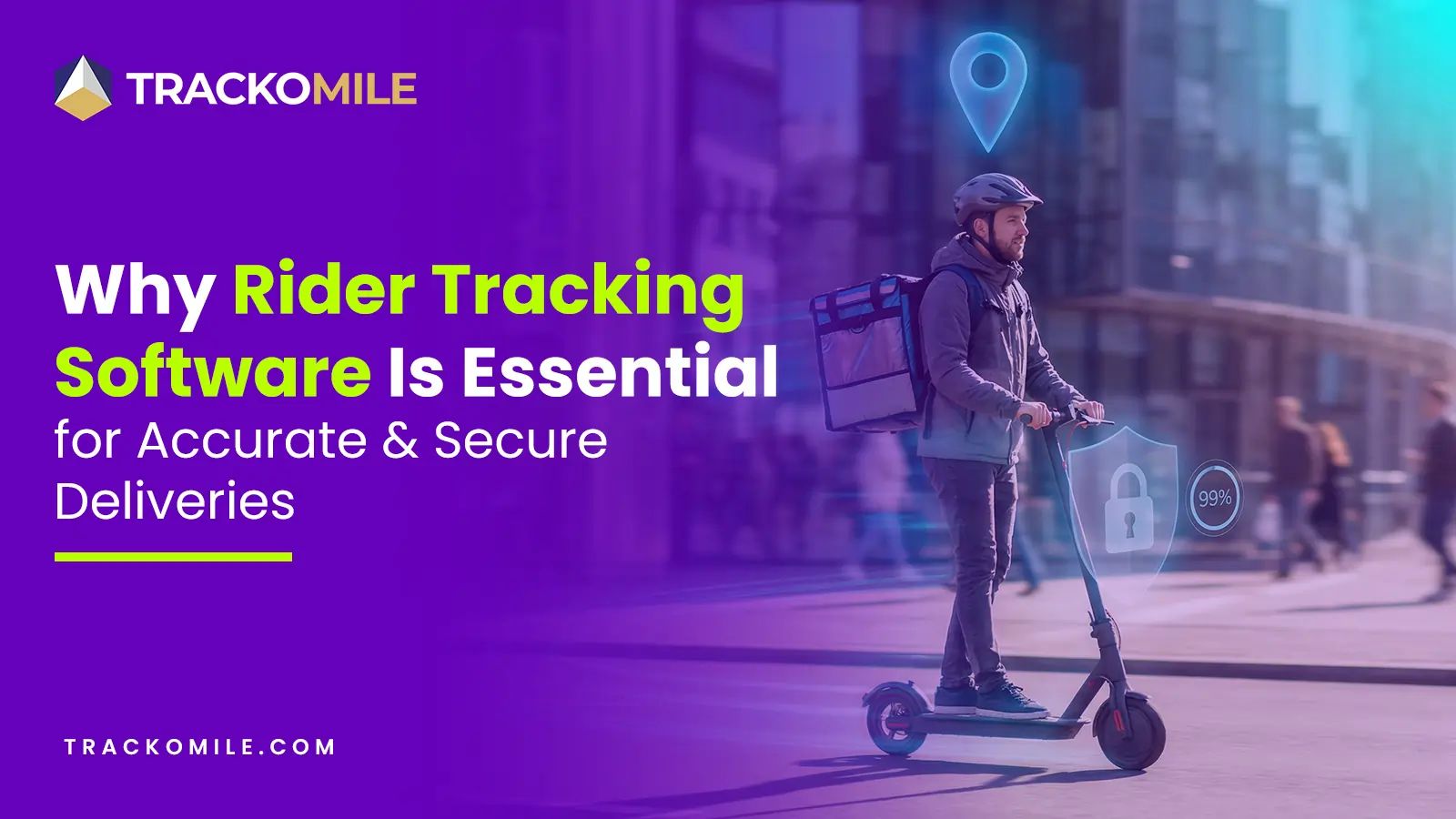
How Rider Tracking Software Improves Delivery Accuracy and Reduces Fraud
Tithi Agarwal December 8, 2025Rider tracking software improves delivery accuracy with real-time GPS visibility and automated ePOD. It also enables route optimisation and fraud…
-
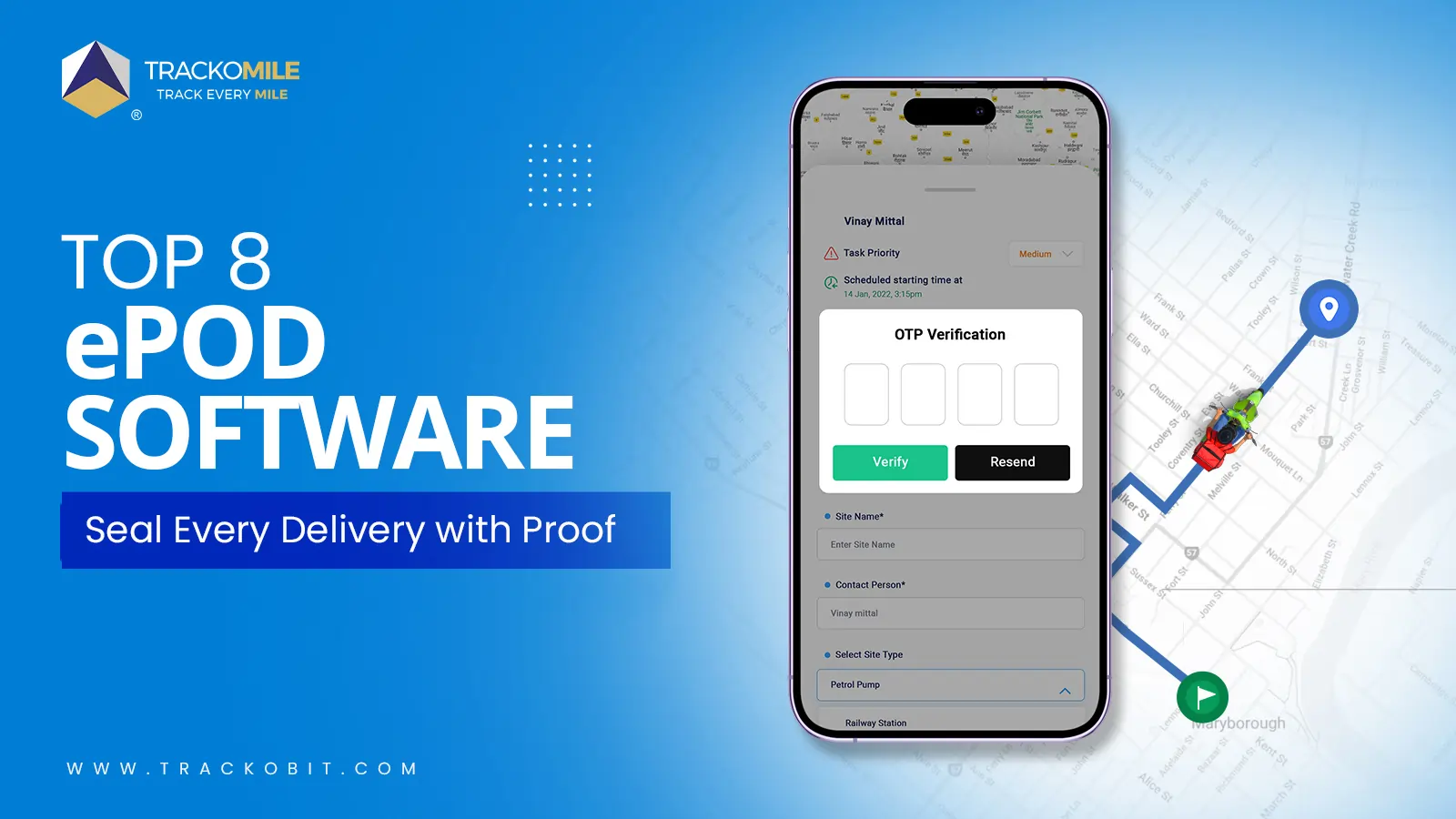
Top Electronic Proof of Delivery (ePOD) Software in 2026
Tithi Agarwal September 25, 2025Electronic proof of delivery has become the backbone of modern logistics. Explore the top 8 ePOD software in 2026 and…
-
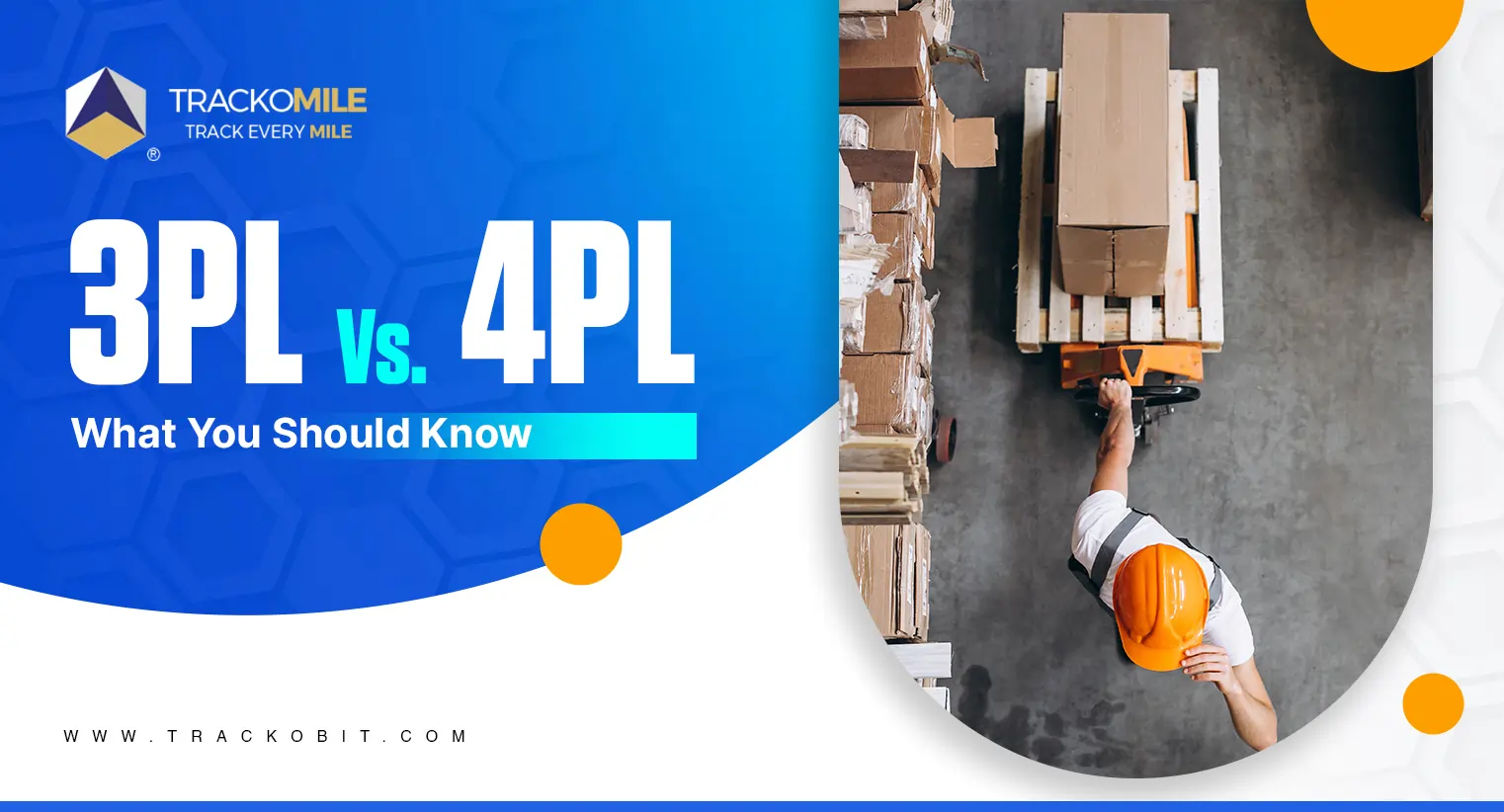
3PL vs. 4PL: Which is Best for Your Business?
Tithi Agarwal September 25, 2024Confused about choosing between 3PL and 4PL for your retail supply chain? Read this blog to find out which is…
-
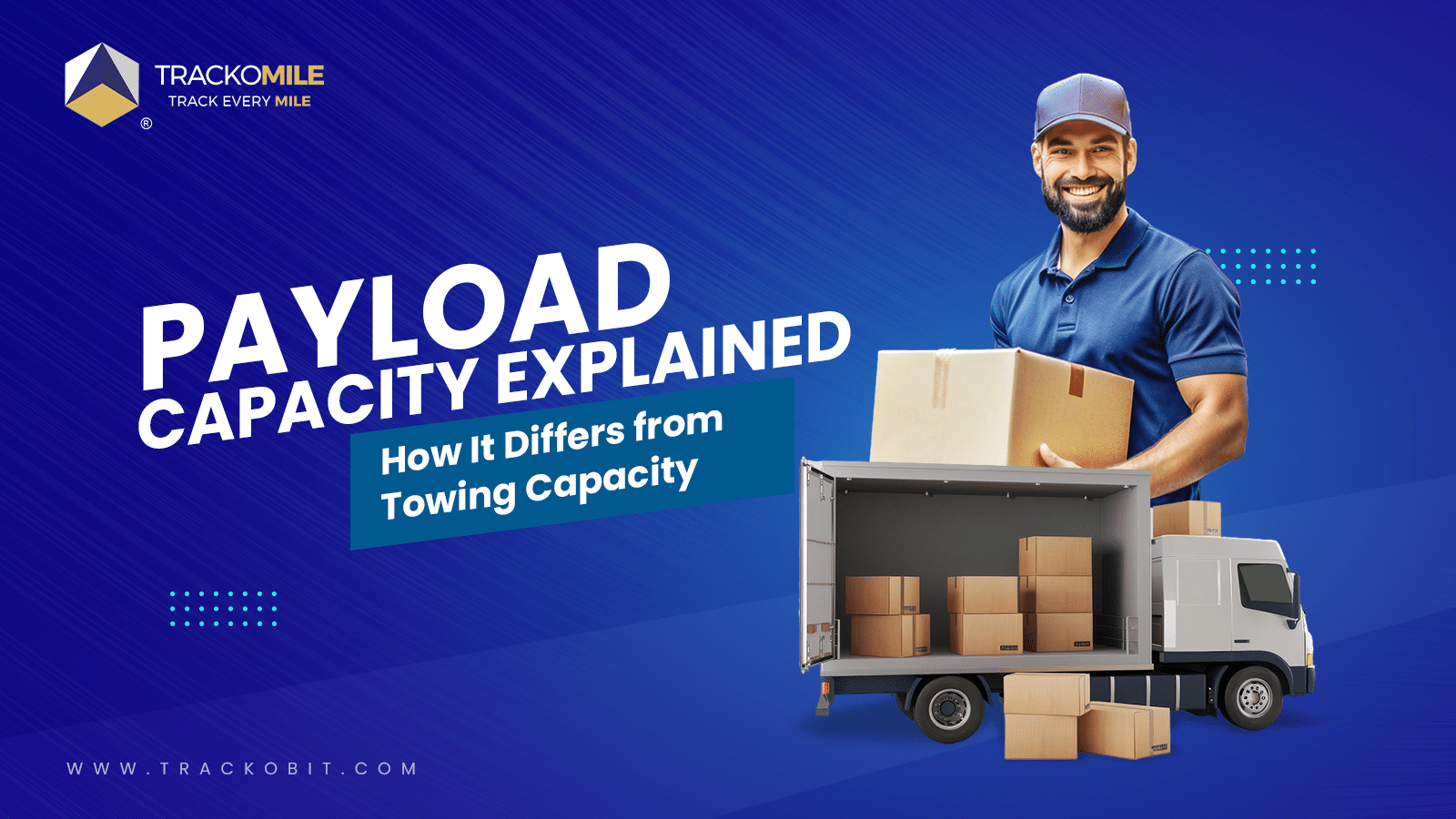
What is Payload Capacity? Payload Capacity Vs. Towing Capacity
Tithi Agarwal September 10, 2024Payload capacity is the total weight a vehicle can safely carry, and it is crucial for safety and compliance. Exceeding…

Subscribe for weekly tips to supercharge your last-mile delivery.
Your inbox awaits a welcome email. Stay tuned for the latest blog updates & expert insights.
"While you're here, dive into some more reads or grab quick bites from our social platforms!"Stay Updated on tech, telematics and mobility. Don't miss out on the latest in the industry.
We use cookies to enhance and personalize your browsing experience. By continuing to use our website, you agree to our Privacy Policy.

































